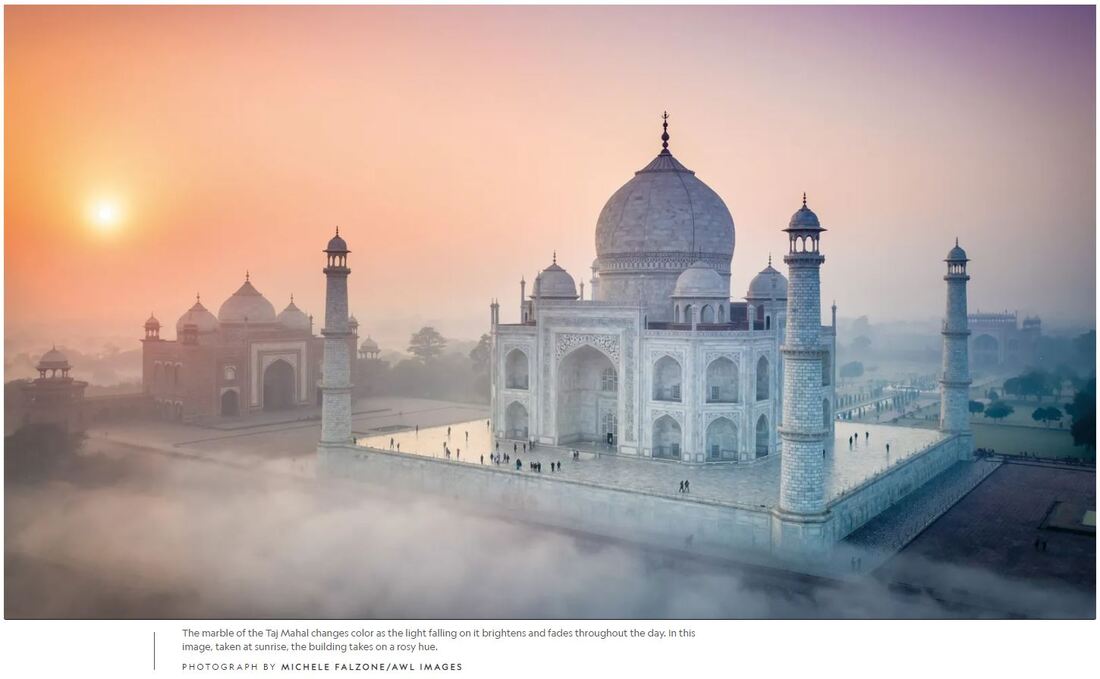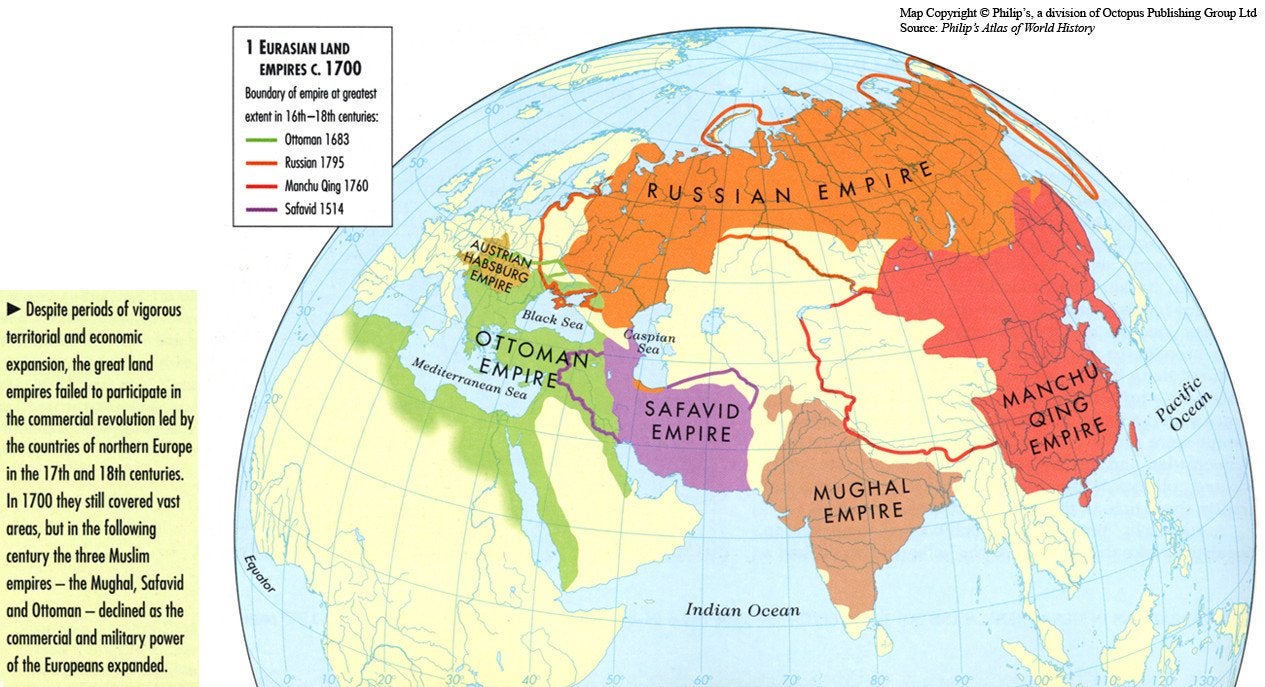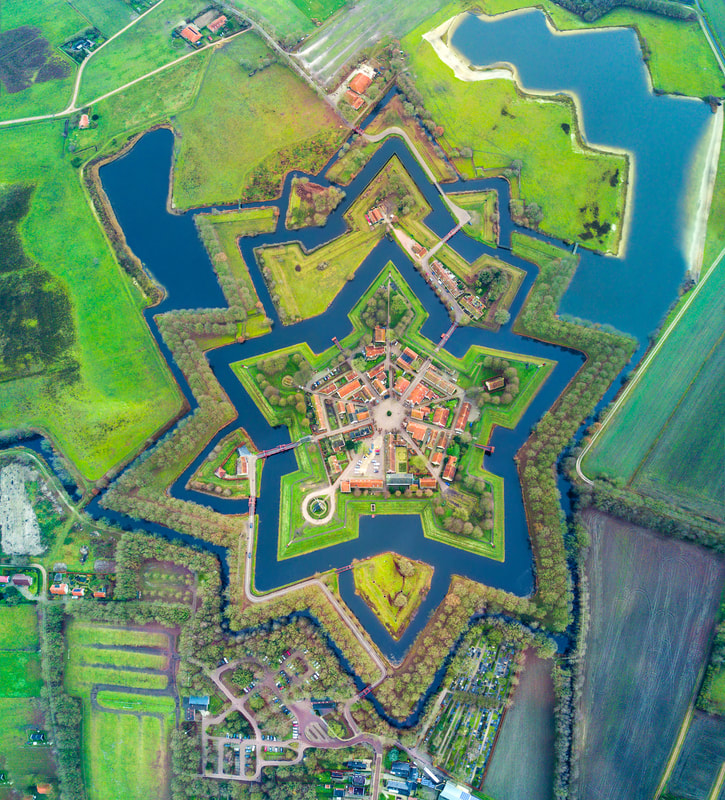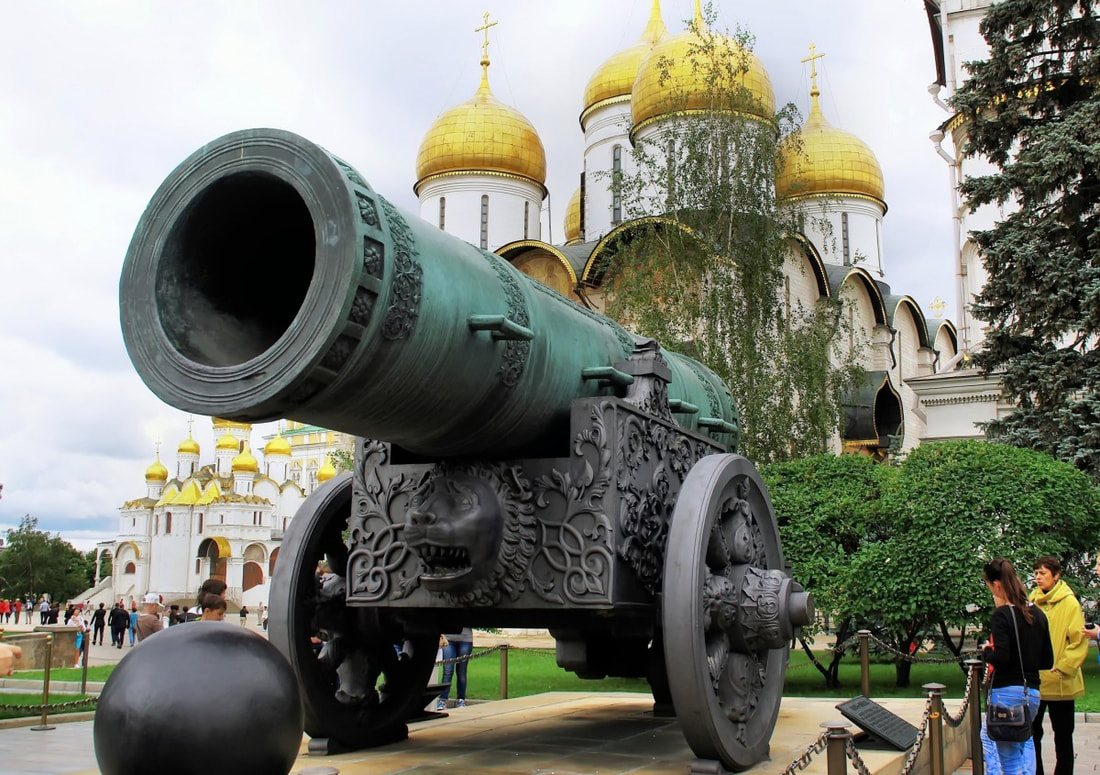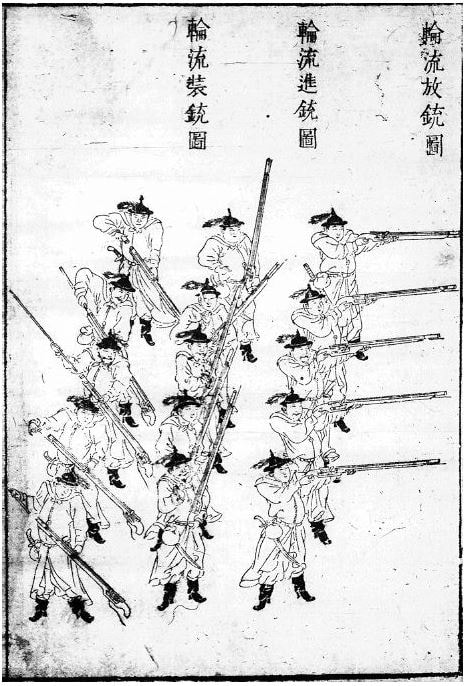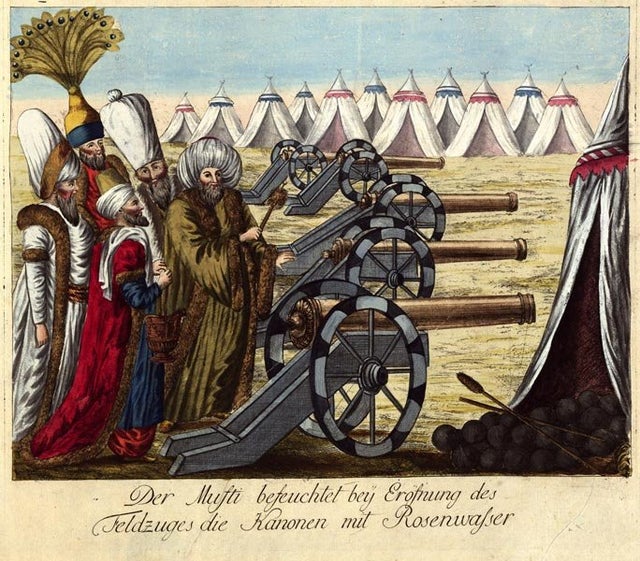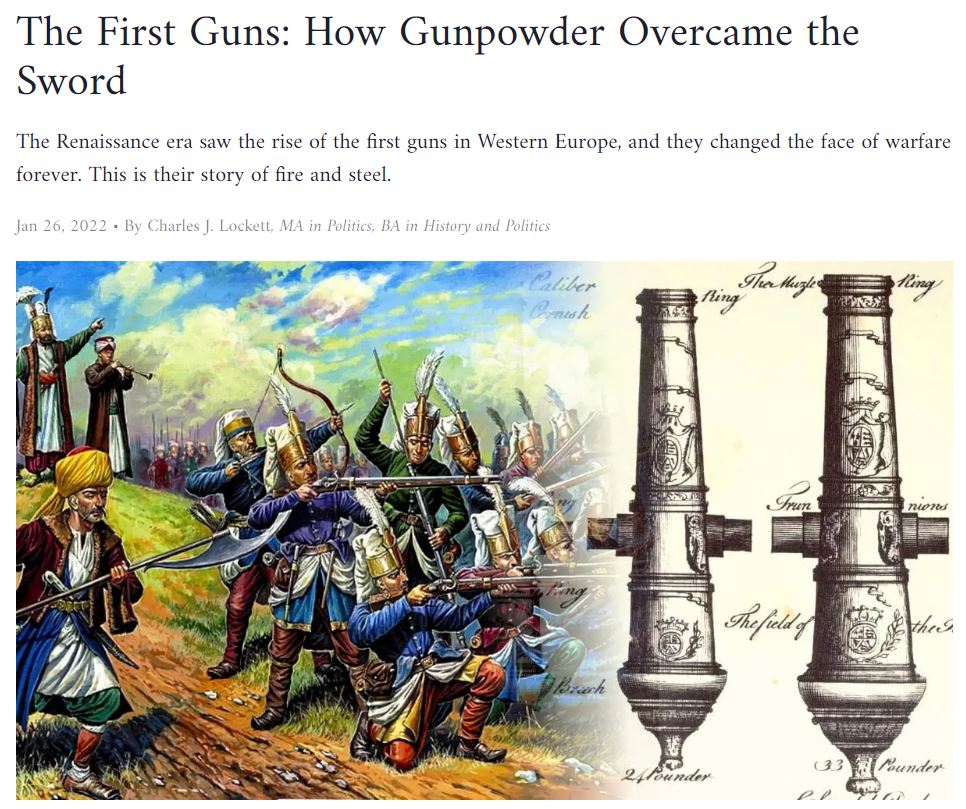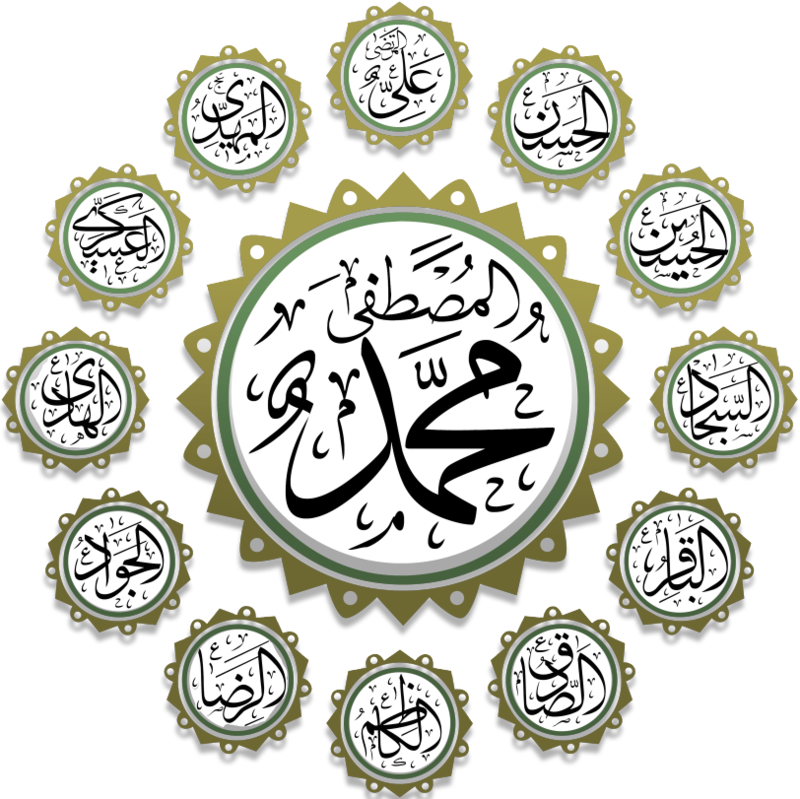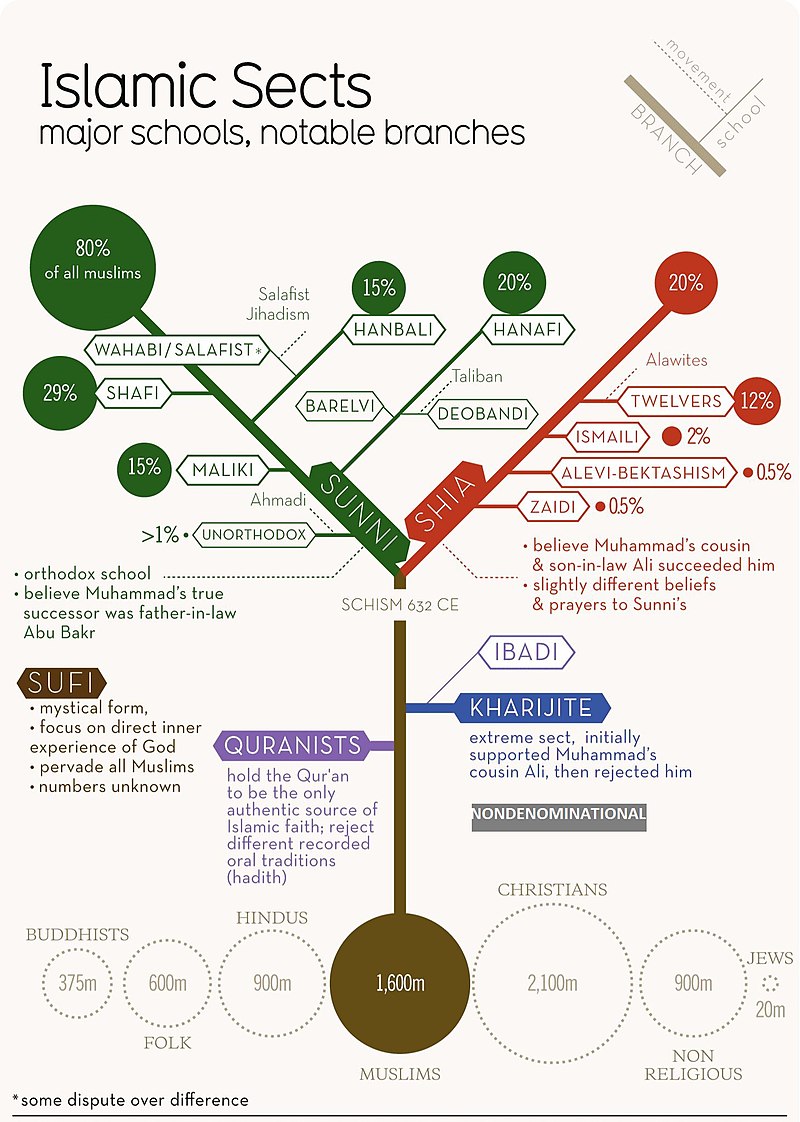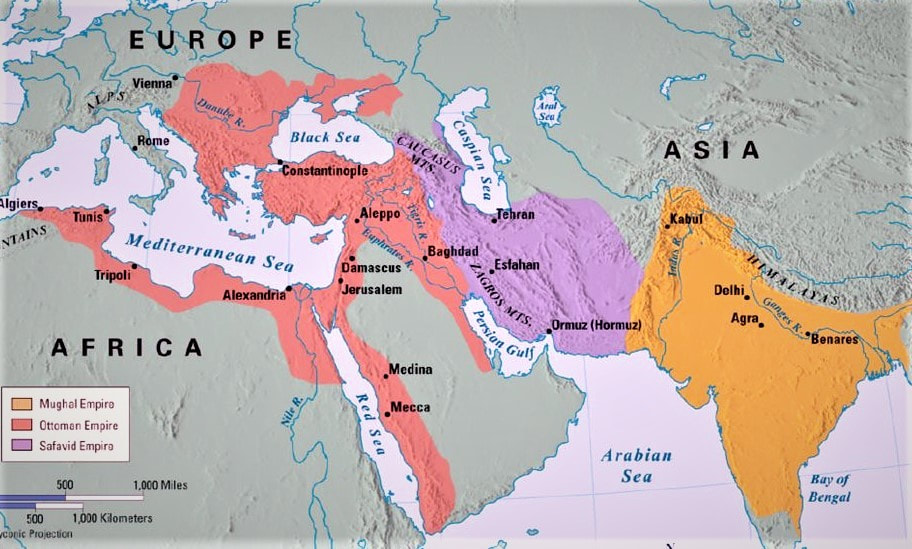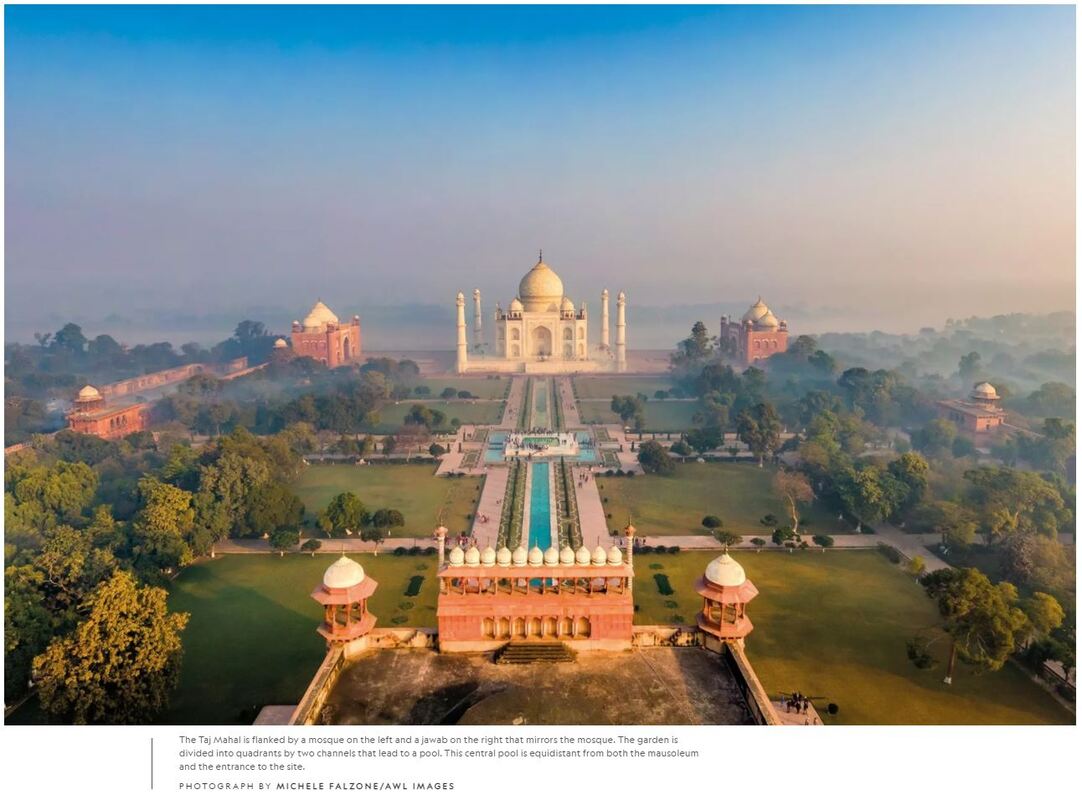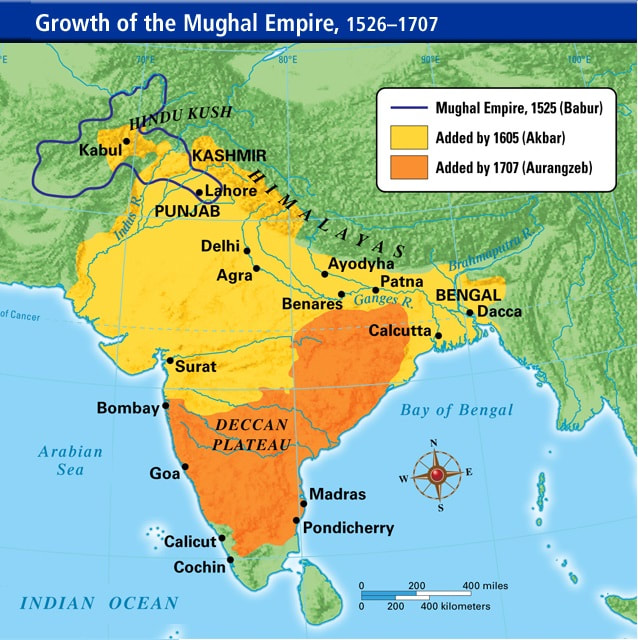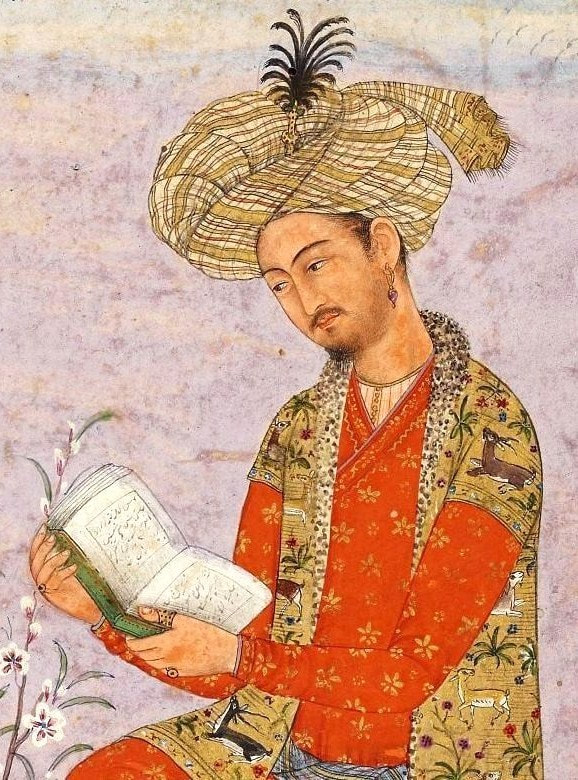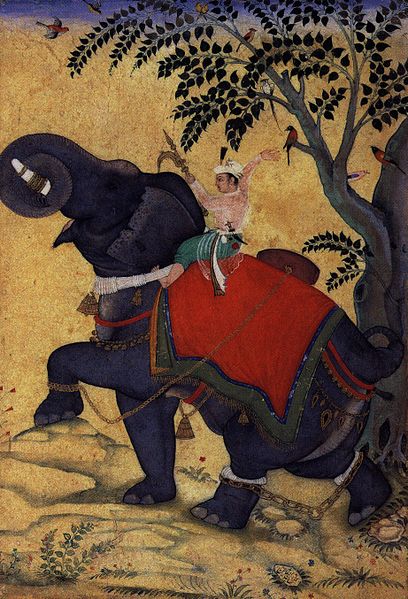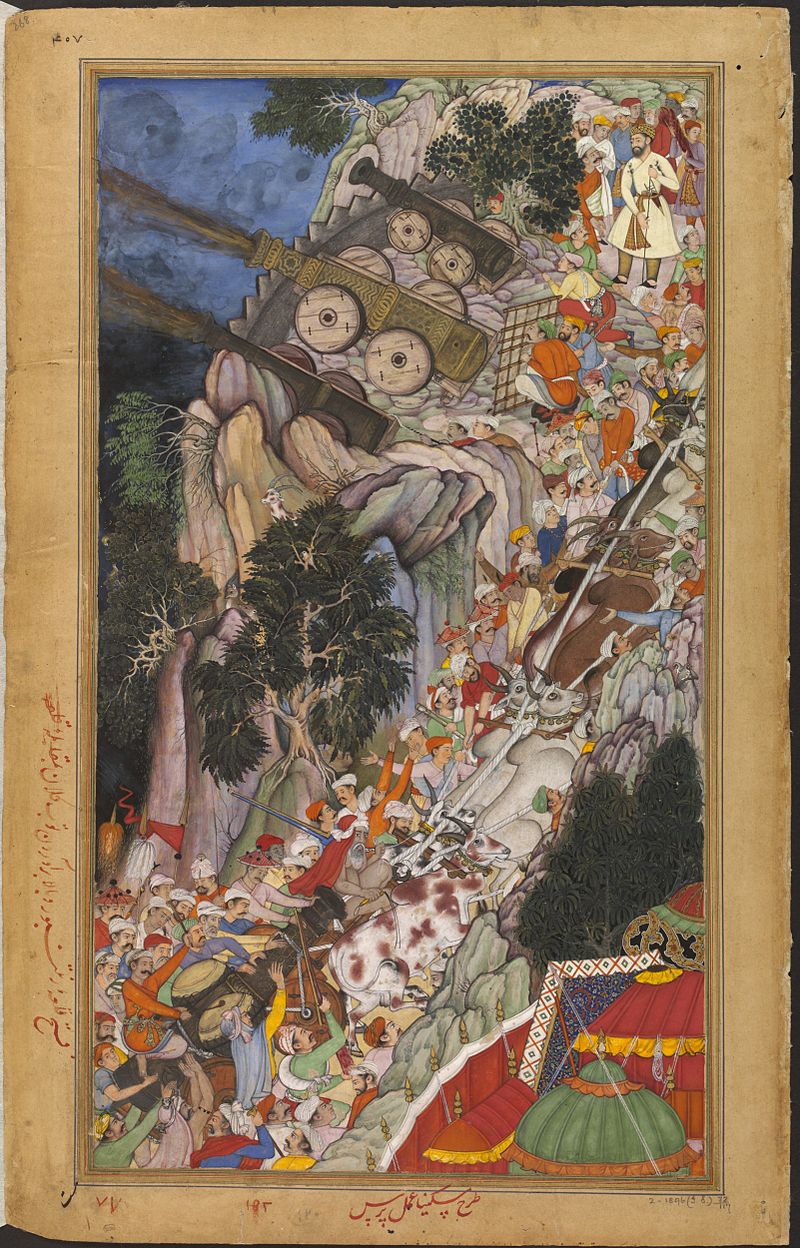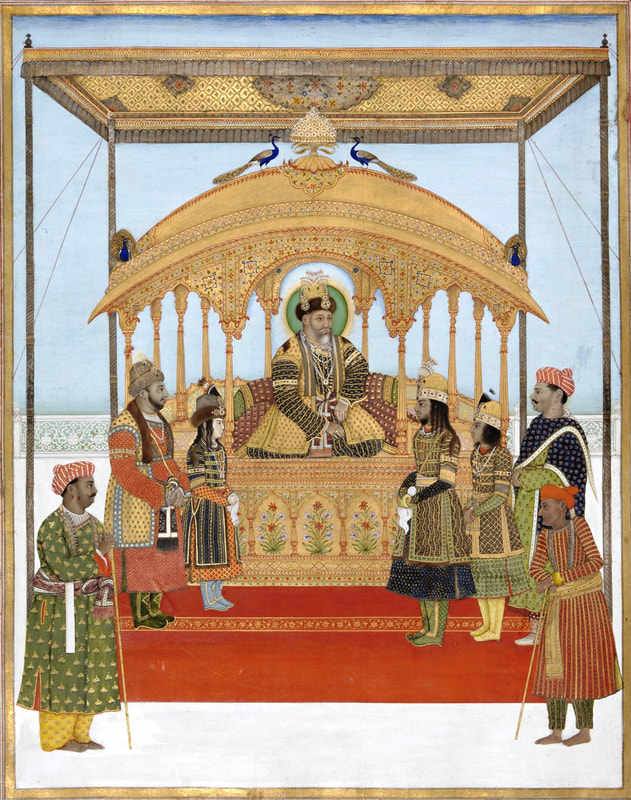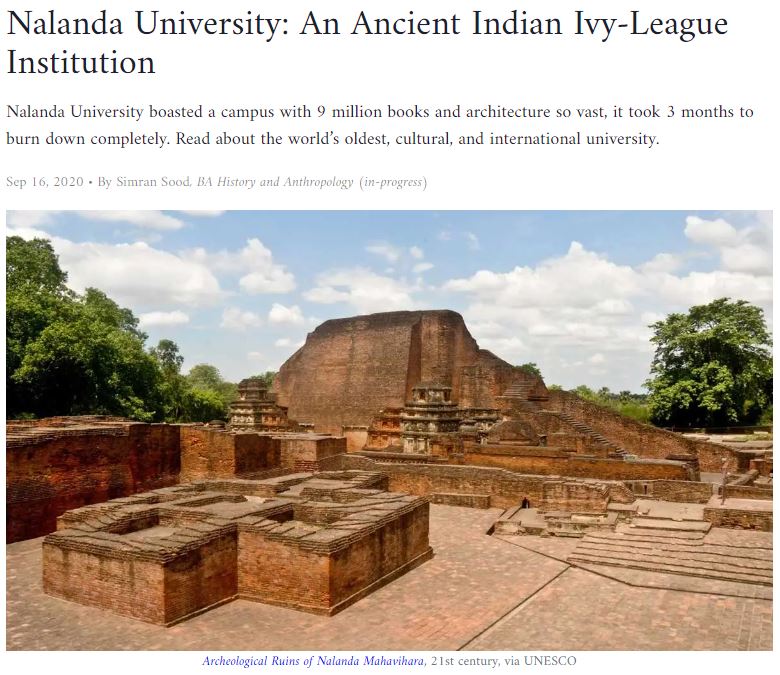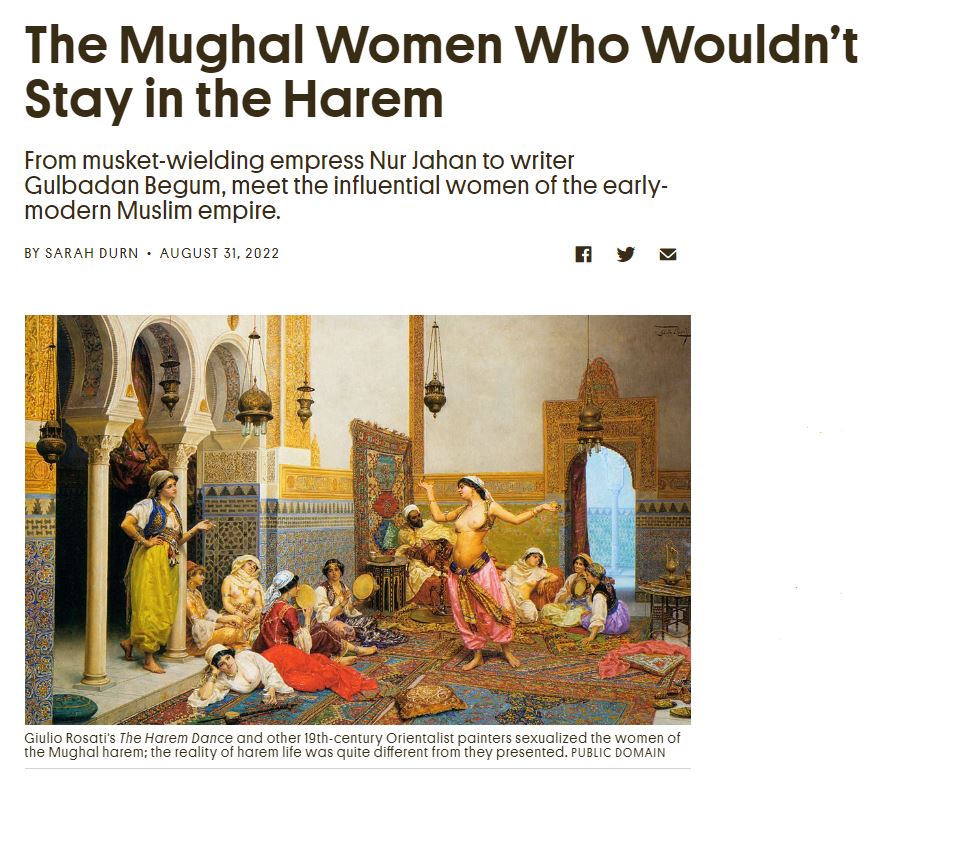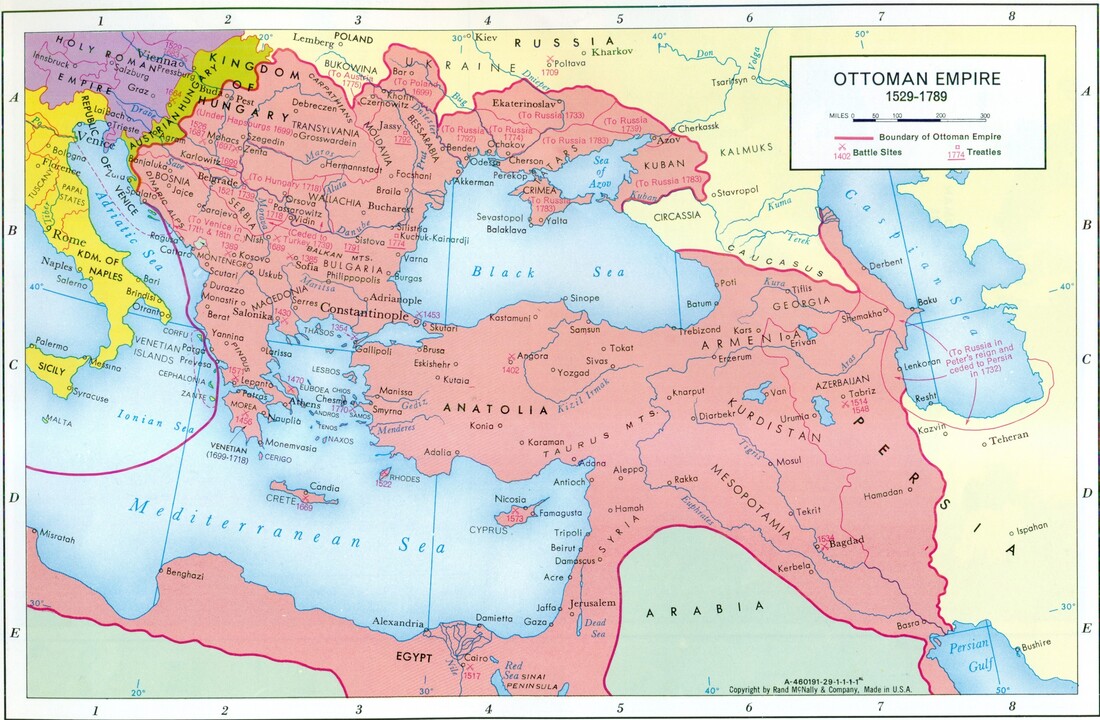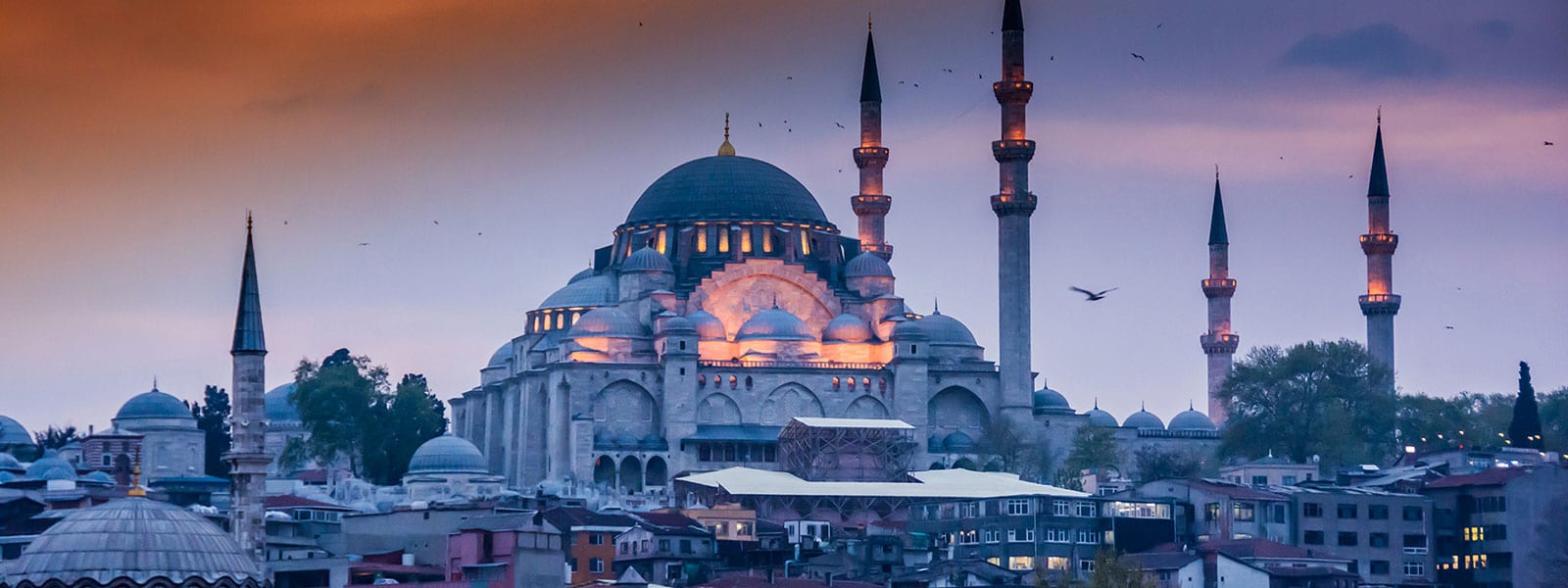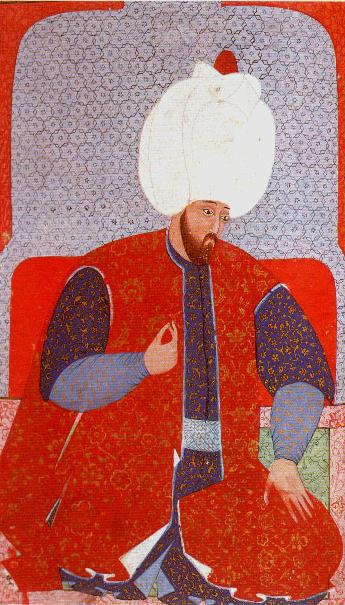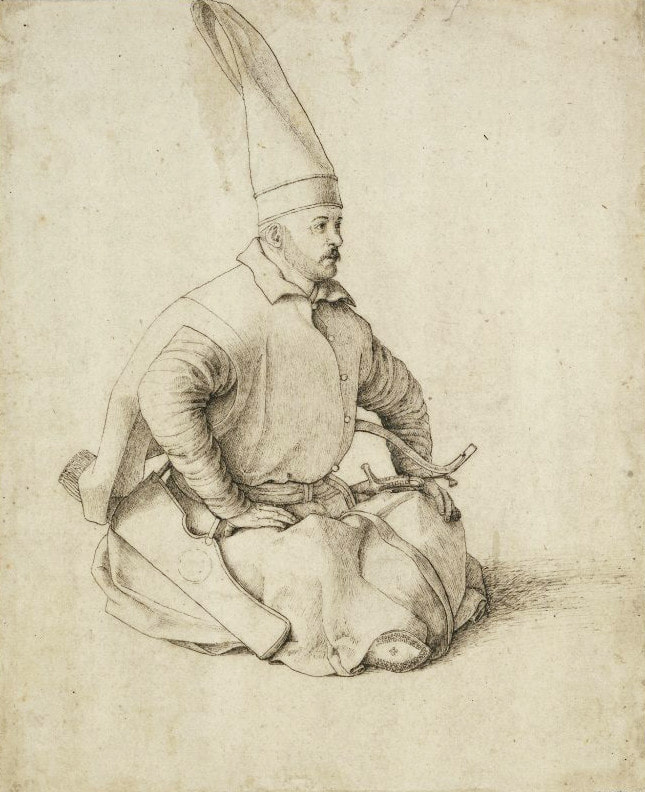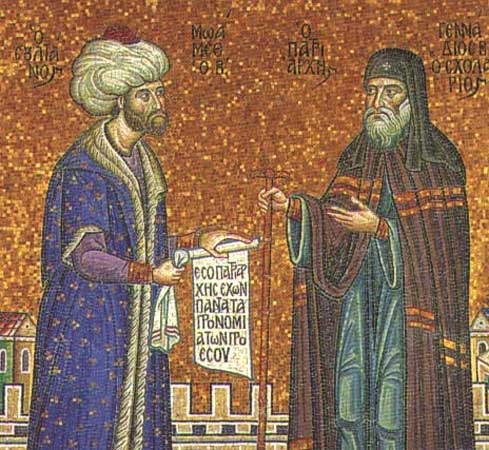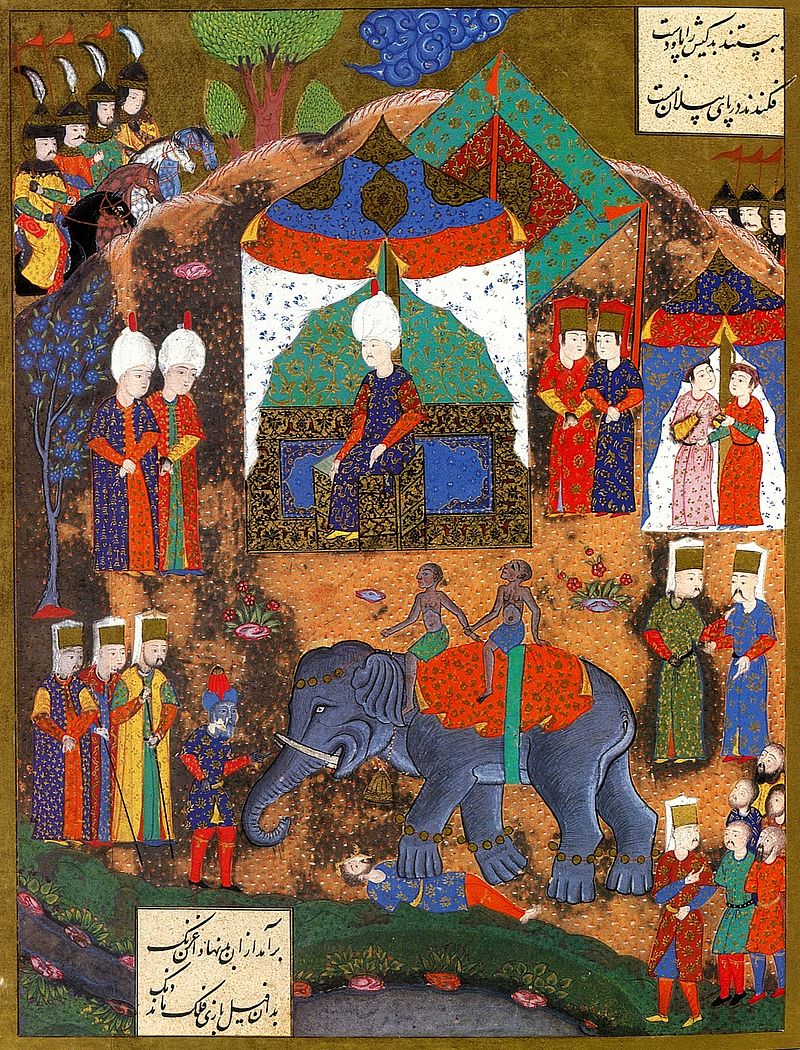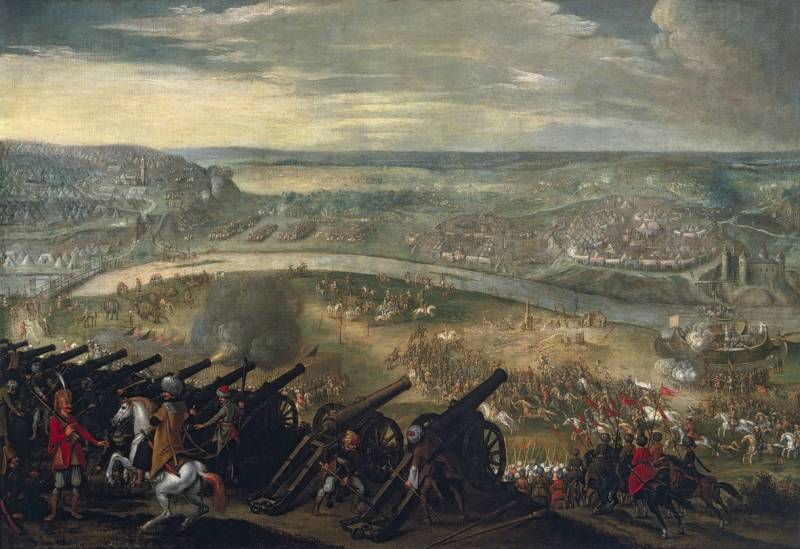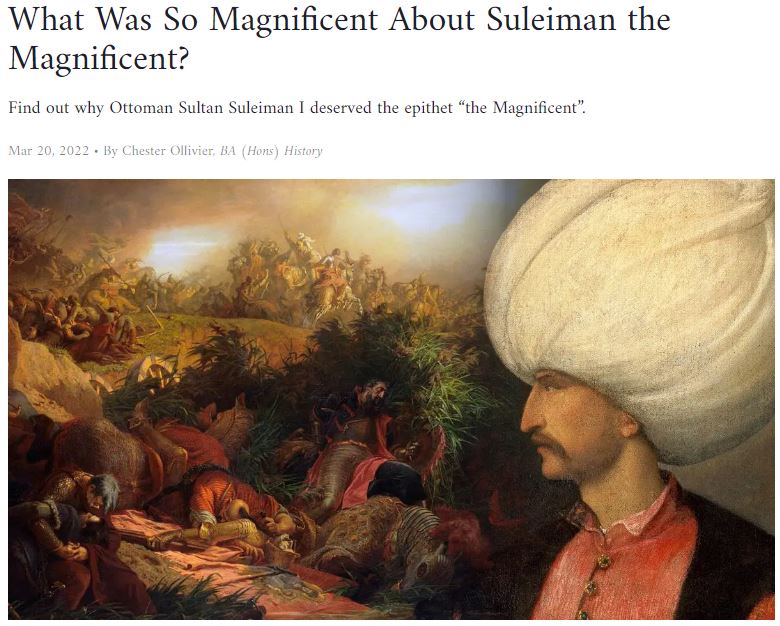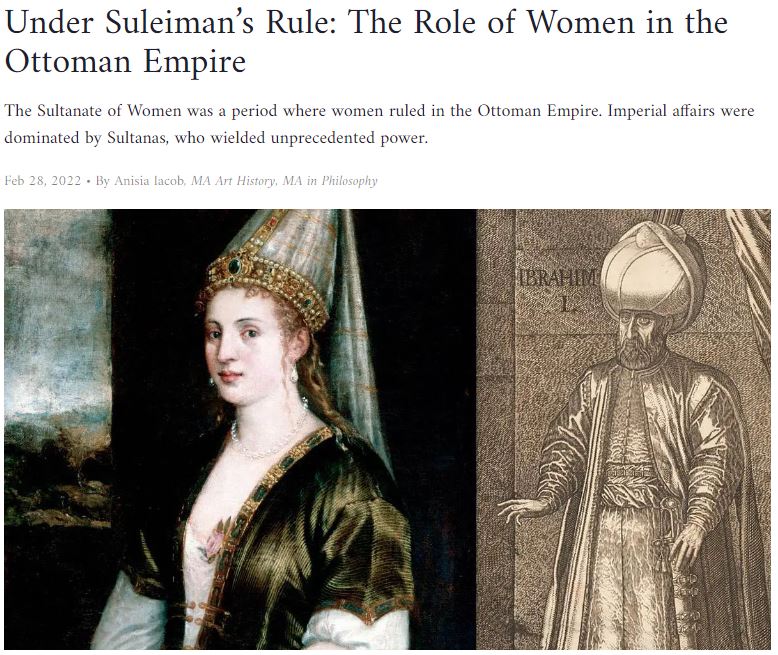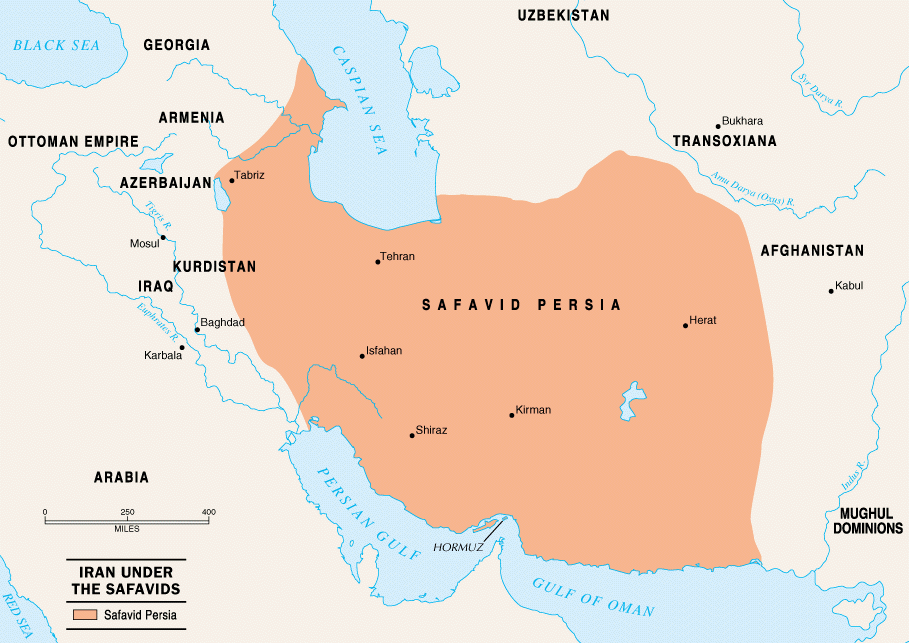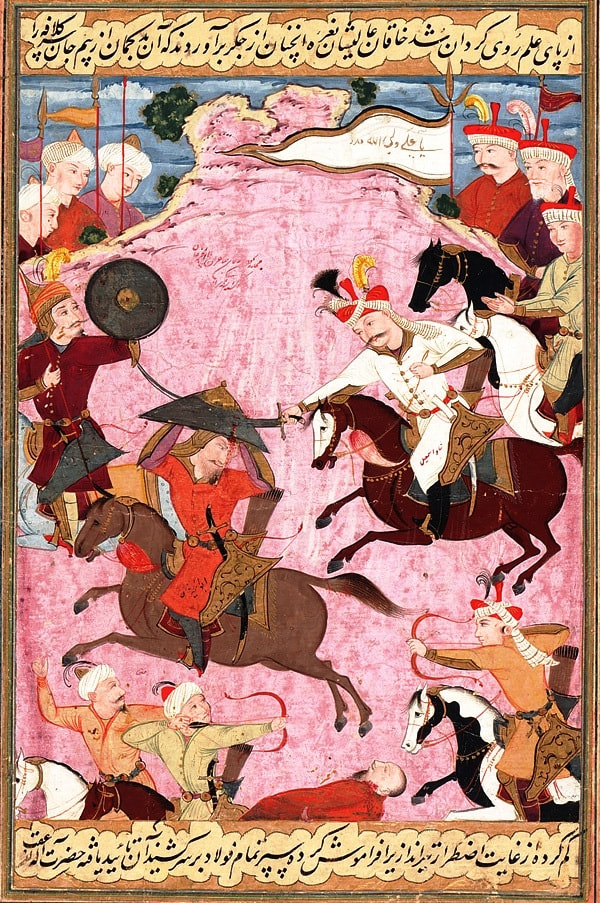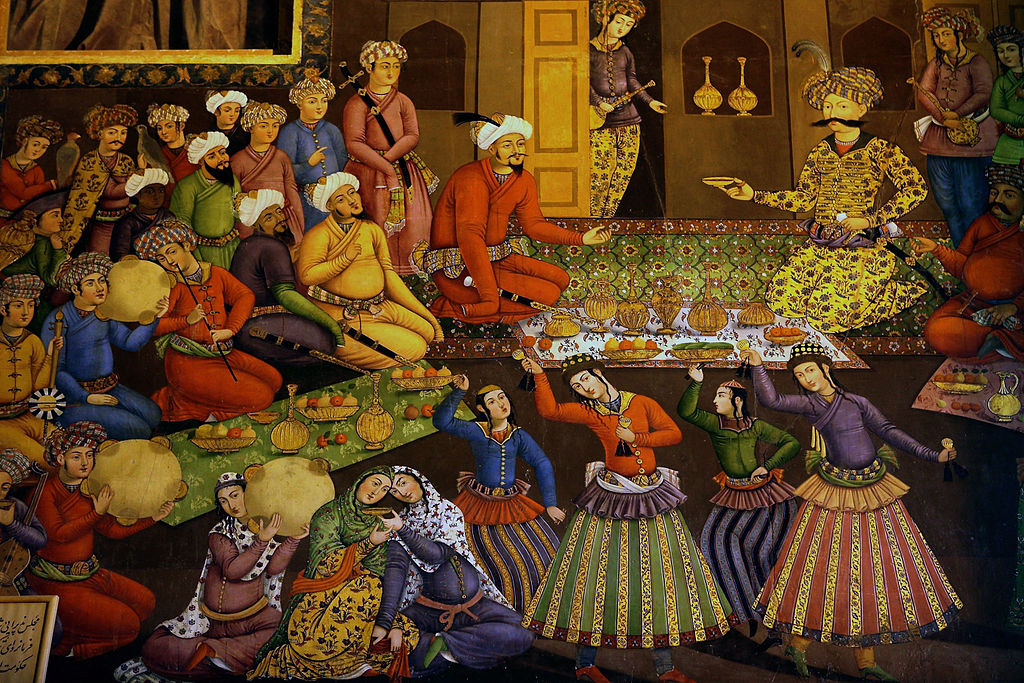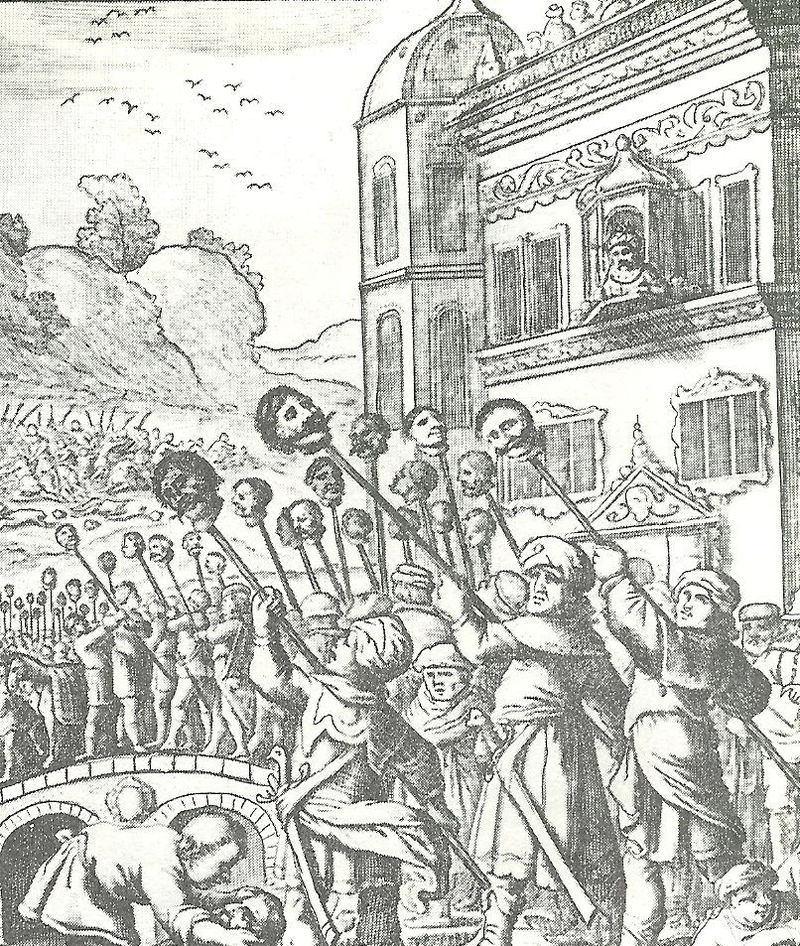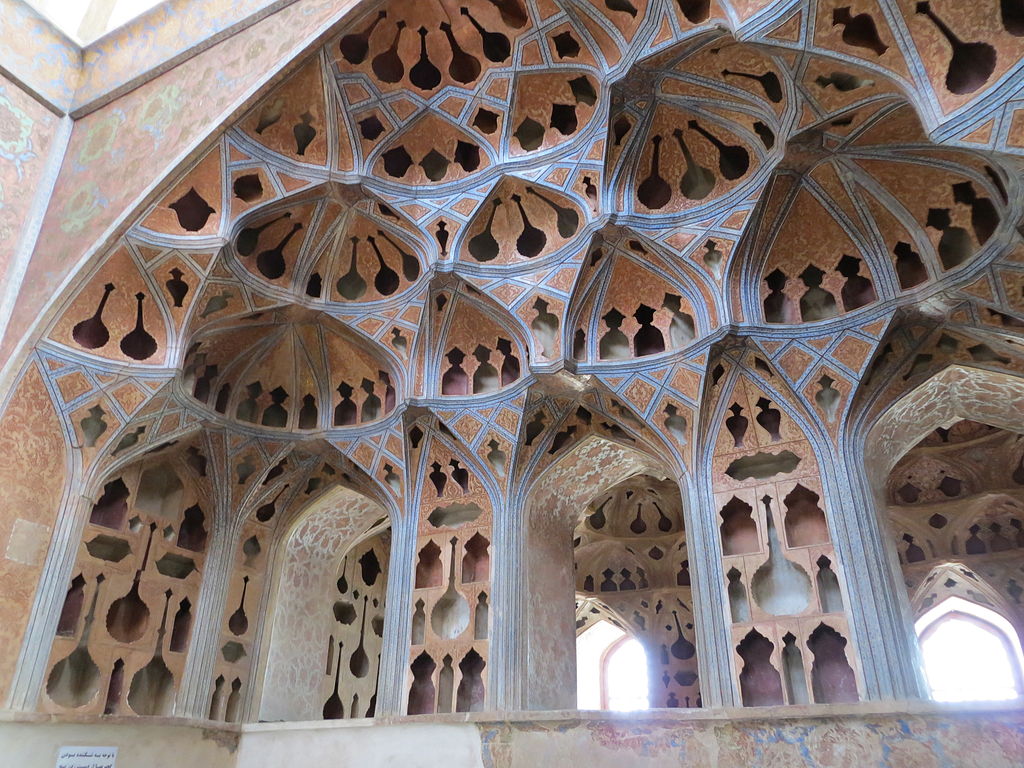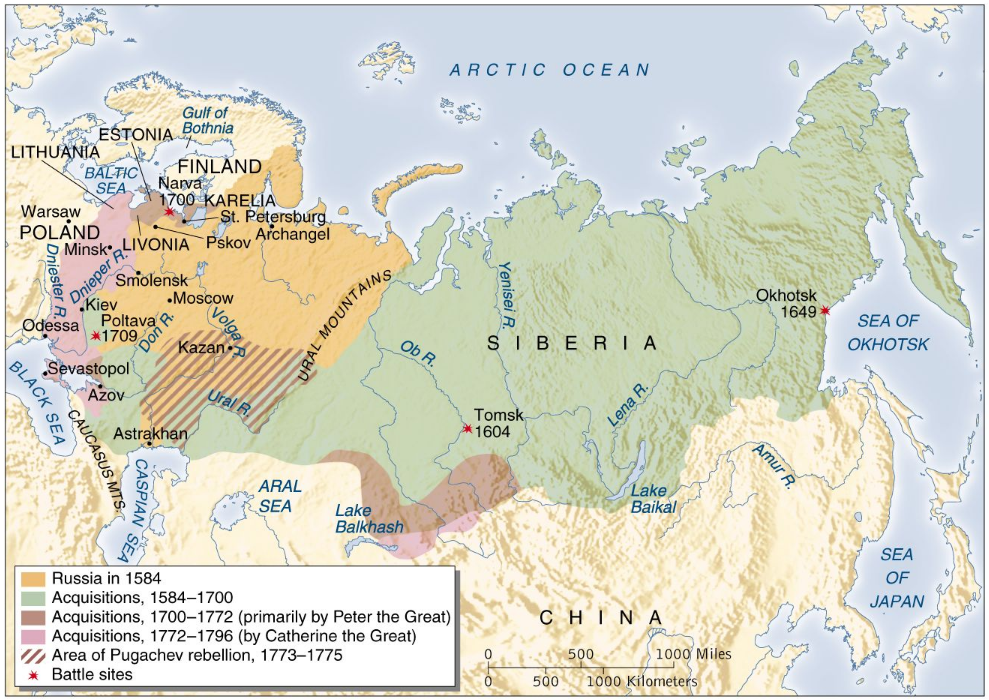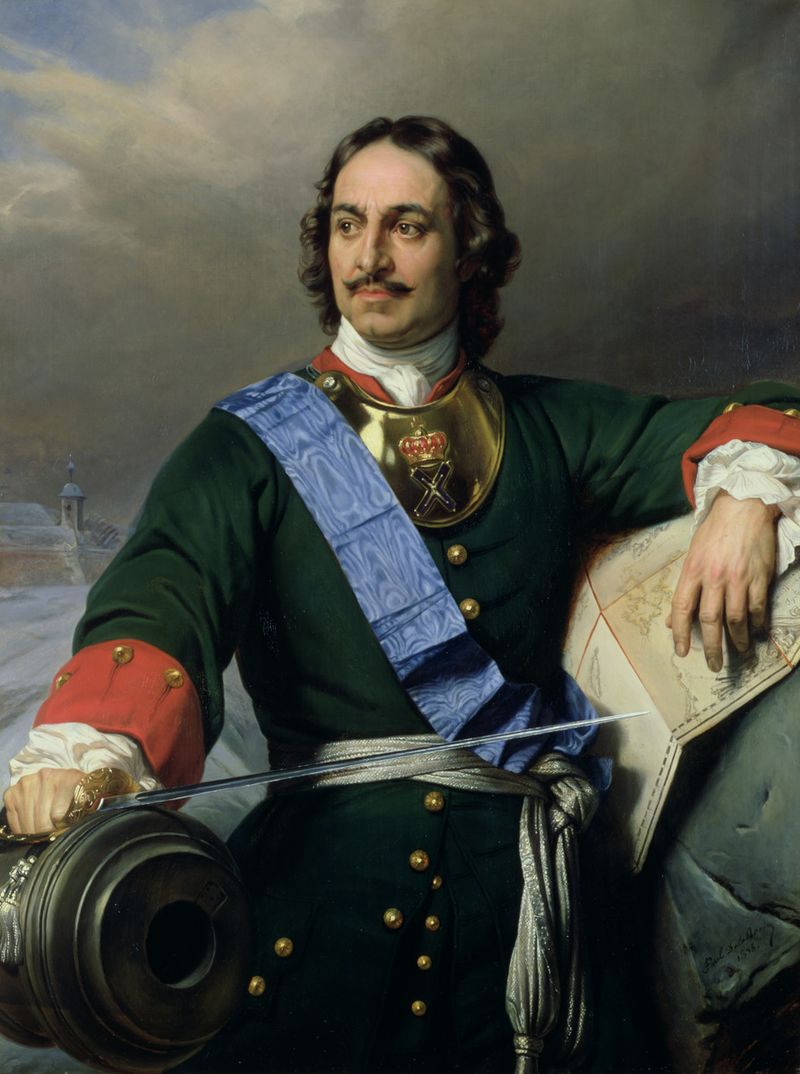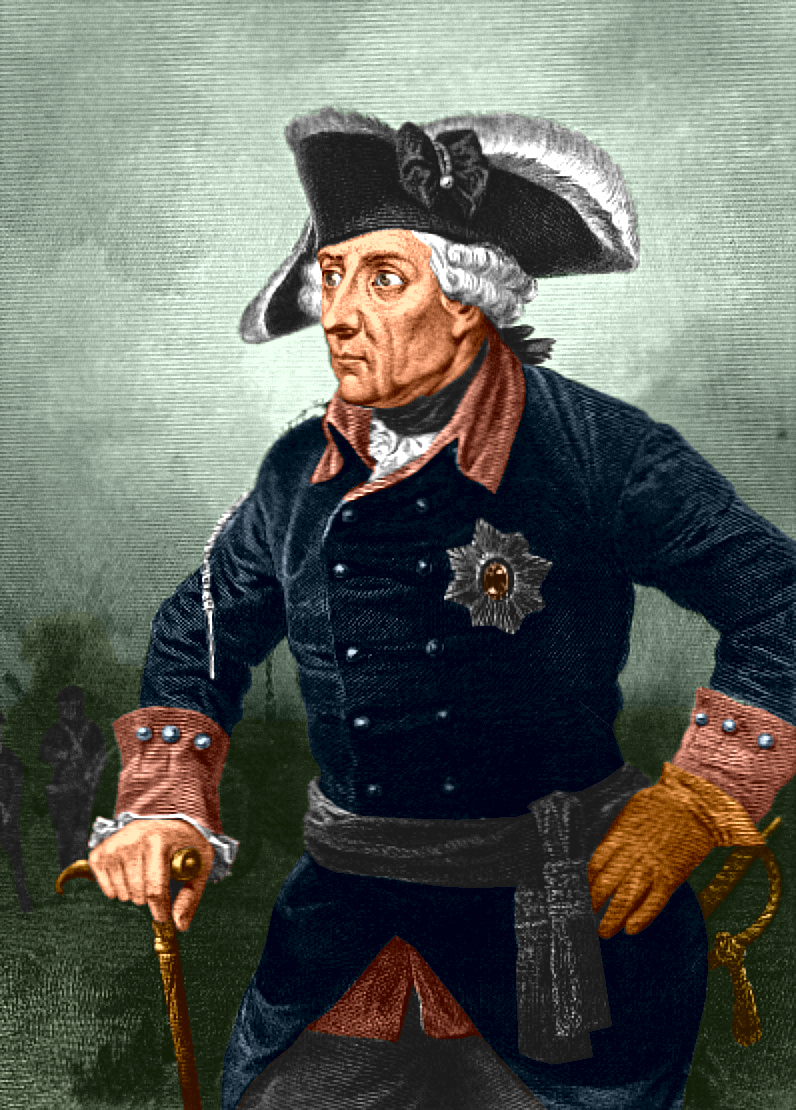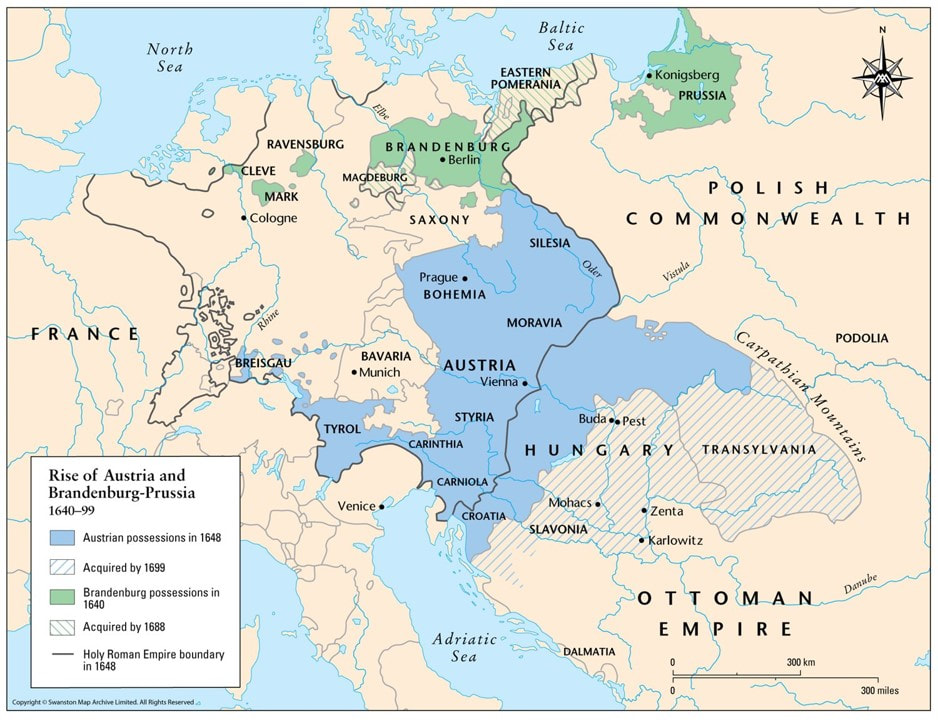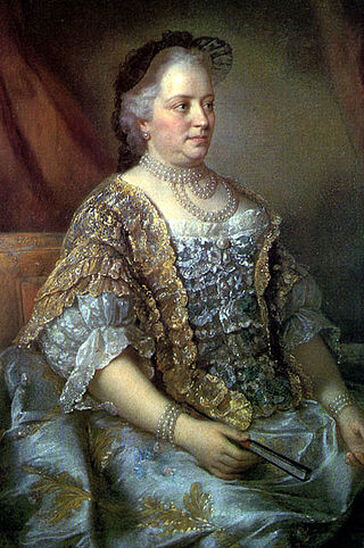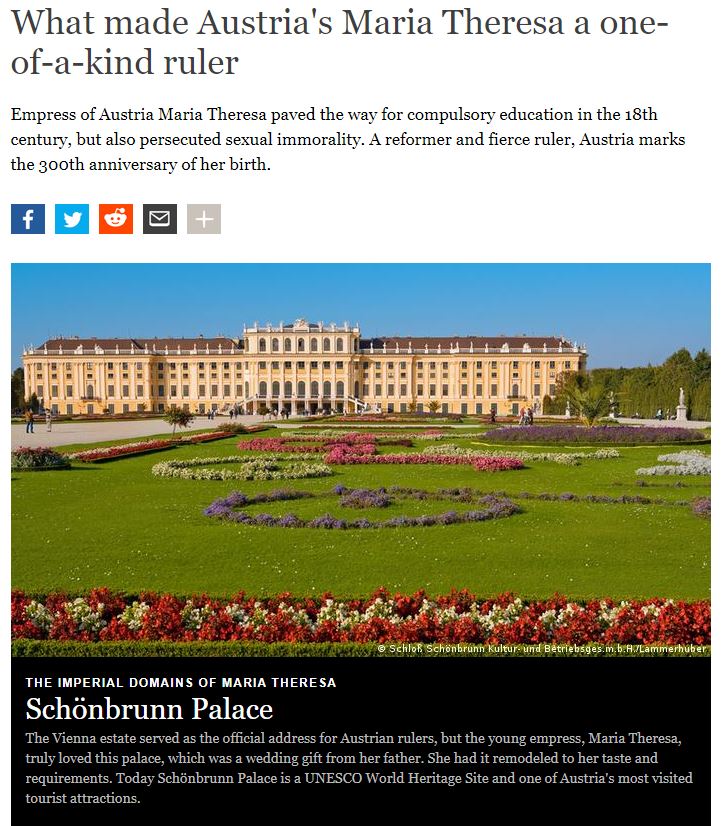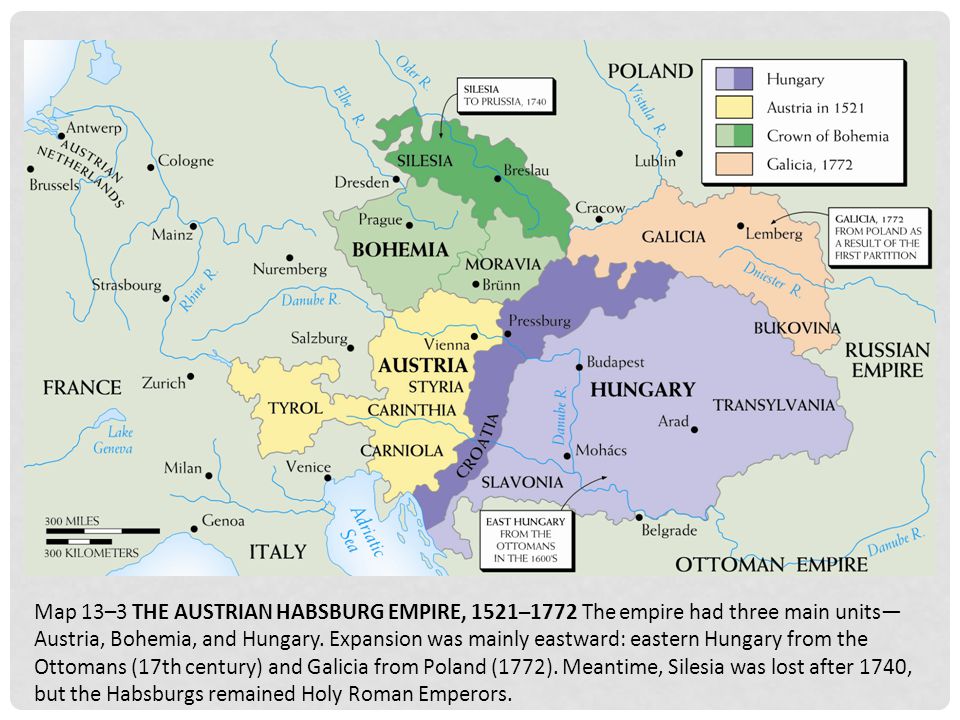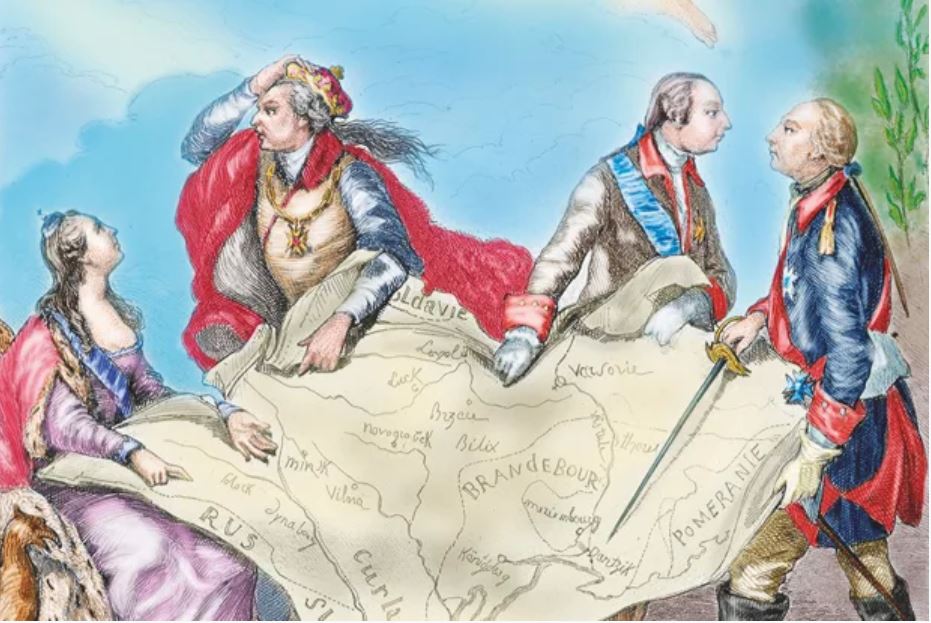Land Empires
c. 1450-1750
Contents
Land Empires, c. 1450-1750
Objectives
- Explain how and why various land-based empires developed and expanded from 1450 to 1750.
- Explain how rulers used a variety of methods to legitimize and consolidate their power in land-based empires from 1450 to 1750.
- Explain continuity and change within the various belief systems during the period from 1450 to 1750.
- Explain the effects of the development of state power from 1450 to 1750.
- Explain how social categories, roles, and practices have been maintained or have changed over time.
Gunpowder Empires
The Military Revolution
|
Fort Bourtange, a star fort completed in the Netherlands in 1593, gave guards a panoramic view of attackers. Massive bombards, like the Tsar Cannon cast in 1586, smashed defensive walls.
|
|
Ming musketry volley formation
Ottoman artillery
|
Imperial expansion relied on the increased use of gunpowder, cannons, and armed trade to establish large empires in both hemispheres.
audio pronunciation guide:
|
|
The Military Revolution (comprehensive)
The Military Revolution (abridged)
|
Sunni, Shi'a, and Sikh
|
calligraphic representation of 12 Imams along with the name of the Prophet Muhammad
|
audio pronunciation guide:
|
|
Sunni, Shi'a, and Sikh (comprehensive)
Sunni, Shi'a, and Sikh (abridged)
|
the trio of Islamic gunpowder empires: Ottomans, Safavids, and Mughals
Mughals
|
Babur, founder of the Mughal empire
Mughal Emperor Akbar training an elephant
dragging siege-guns uphill during Akbar's attack on Ranthambhor Fort in 1568
|
audio pronunciation guide:
|
Mughal architecture
|
Mughal Empire (comprehensive)
Mughal Empire (abridged)
|
Ottomans
Süleymaniye Mosque, Istanbul
|
Janissary drawing by Gentile Bellini
Ottoman siege of Esztergom (1543)
|
audio pronunciation guide:
|
|
Ottoman Empire (comprehensive)
Ottoman Empire (abridged)
|
Safavids
|
Isma'il was reported to use the gilded skull of a defeated enemy as a wine goblet
court of Shah Abbas I the Great
music hall of that Ali Qapu palace
|
audio pronunciation guide:
|
|
Safavid Empire (comprehensive)
Safavid Empire (abridged)
|
Russia, Prussia, and Austria
Russia
|
Peter I, the Great (r. 1682–1725) elevated Russia from a weak state on Europe's eastern fringe to a Great Power as he modernized and Westernized the nation.
|
audio pronunciation guide:
|
Prussia
|
Frederick II, the Great (r. 1740–1786) greatly expanded Prussia's territory and made Prussia a leading military power in Europe.
|
audio pronunciation guide:
|
Austria
|
Maria Theresa (r. 1740–1780), the only female leader of the Hapsburg dynasty, defended her lands against Frederick the Great of Prussia in both the War of Austrian Succession and Seven Years’ War.
|
audio pronunciation guide:
|
Poland
The rulers of Russia, Austria, and Prussia divided and conquered Poland in a series of three Partitions.
|
|
audio pronunciation guide:
|
|
Russia, Prussia, and Austria (comprehensive)
Russia, Prussia, and Austria (abridged)
|
